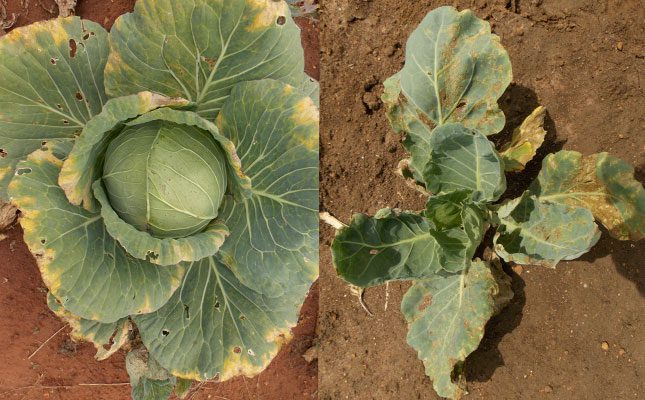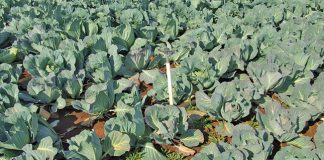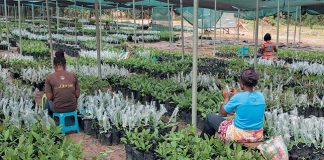
Photo: Bill Kerr
Black rot (Xanthomonas campestris) is the most well-known disease of cabbages and other brassicas. Occurring around the world, it can render a cabbage crop totally unmarketable.
Black rot is a bacterial disease, and many weeds host the pathogen. The bacteria are airborne. The disease typically starts on the edges of the leaf, with conspicuous V-shaped lesions appearing where the veins reach the margin.
This is because, when the soil is moist, droplets of sap exude from the water-secreting pores (hydathodes) at night. The droplets can be seen in the early morning before the dew evaporates.
The bacteria in the air then alight on these exposed droplets, and are sucked back into the leaf when the sun dries the dew. This is the main entry point for the bacteria.
X. campestris can also enter the leaves through hail or insect damage. This means that resistant cabbage varieties are also vulnerable.
These varieties have been bred to resist the bacteria from entering via the water pores, but damage to the leaf leaves them exposed.
Once in a leaf, X. campestris becomes systemic, spreading and affecting the entire plant. If you snap the leaf below the lesion, you will see that the main vein is black inside, hence the common name, black rot.
Copper spray
The literature often suggests the use of copper spray to prevent the disease, but I have had zero success when applying this in trials.
The reason is that the water droplets that exude at night from the pores don’t contain the copper necessary to kill the bacteria. If you have a hailstorm, however, it may help to spray copper immediately.
In the summer rainfall areas, the warm, moist weather of mid to late summer favours black rot. Under these conditions, the disease can appear as if from nowhere to attack susceptible varieties.
I knew a farmer who wanted to grow a susceptible cabbage variety in the black-rot season. He heat-treated the seed and planted in virgin soil. Even though no other farmer in the area was growing cabbage, he lost his entire crop to black rot.
Control
Fortunately, there are ways to minimise black rot damage. The first is to plant the cabbages further apart to ensure better air flow through the crop. This will also hasten maturity, making it possible to harvest before the disease renders the heads unmarketable.
The second way is to plant when the weather is colder. I once grew a crop of cabbages that, although marketable, did have black rot on the outer leaves.
My boss wanted another crop planted, and the only ground available was the land just harvested. I prepared the land and planted, including some of the leaves from the previous crop that were still green with black rot symptoms.
The following crop turned out clean, however, thanks to the change in season: it was too cold for the disease.
I sometimes encounter another variant of the disease that produces irregular blotches across the width of the leaf. This affects only the odd plant and the symptoms disappear on their own, so it is not a serious problem.
Bill Kerr is a vegetable specialist and breeder.










